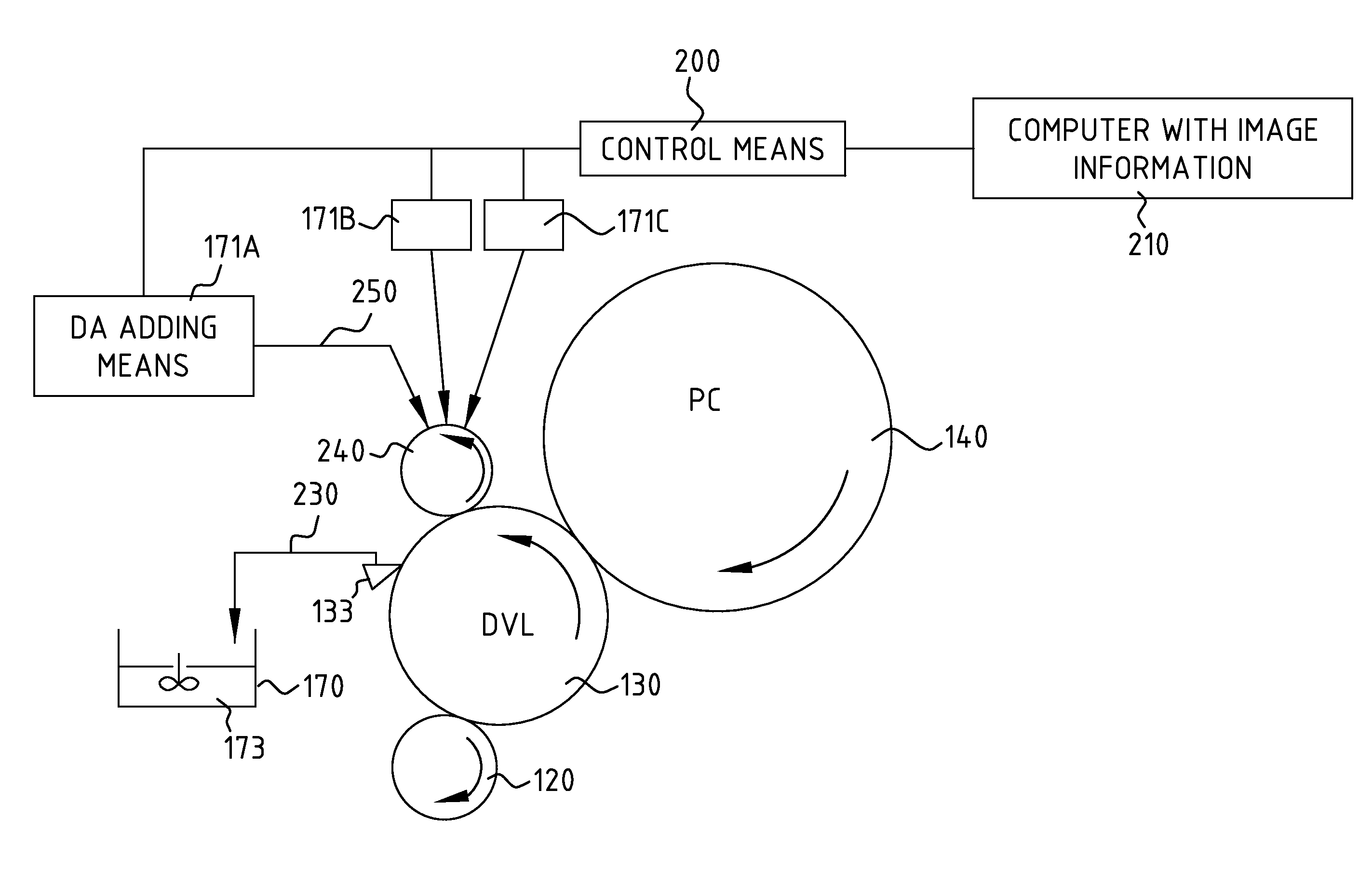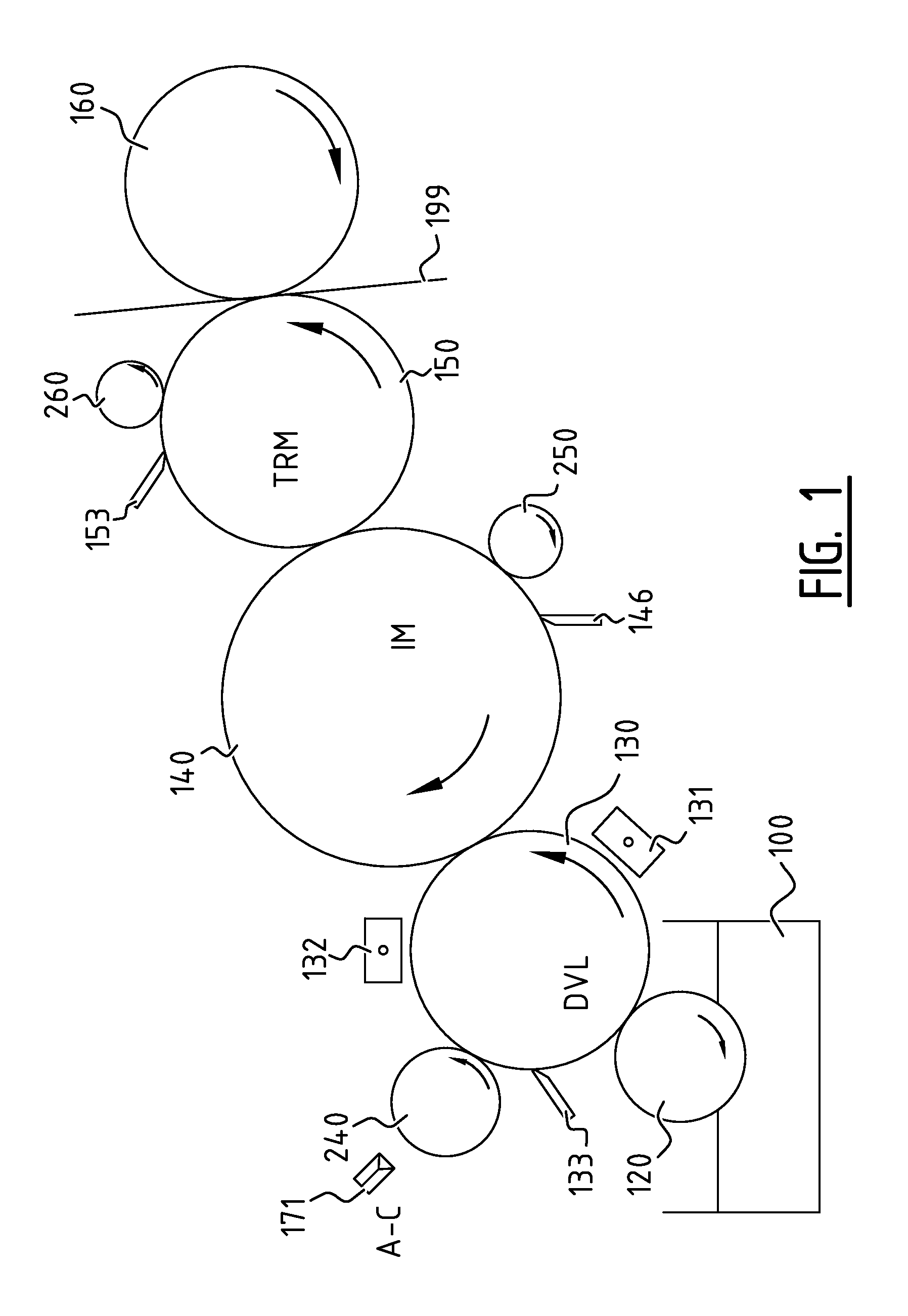Method of Digitally Printing and System Therefor
a digital printing and printing system technology, applied in the field of digital printing, can solve the problems of increasing the viscosity of the liquid dispersion, difficult to remove such residues, and liquid with a non-uniform distribution of marking particles, so as to facilitate the removal of excess liquid development and improve the treatment process
- Summary
- Abstract
- Description
- Claims
- Application Information
AI Technical Summary
Benefits of technology
Problems solved by technology
Method used
Image
Examples
Embodiment Construction
[0057]The Figures are not drawn to scale and purely diagrammatical in nature. Equal reference numerals in different Figures refer to equal or corresponding features.
[0058]FIG. 1 illustrates diagrammatically a first embodiment of a digital printing apparatus of the invention, comprising a reservoir 100, a feed member 120, a developer member 130, an imaging member 140, a intermediate member 150 and a support member 160. A substrate 199 is transported between intermediate member 150 and support member 160. Both the development member 130 and the imaging member 140 and also the intermediate member 150 can function as the development member according to the invention, and are shown as provided with a removal devices 133, 146, 153, and with treatment means 132, 240; 250; 260. Without loss of generality, the aforementioned members are illustrated and described as rollers, but the skilled person understands that they can be implemented differently, e.g. as belts.
[0059]In operation, an amoun...
PUM
 Login to View More
Login to View More Abstract
Description
Claims
Application Information
 Login to View More
Login to View More - R&D
- Intellectual Property
- Life Sciences
- Materials
- Tech Scout
- Unparalleled Data Quality
- Higher Quality Content
- 60% Fewer Hallucinations
Browse by: Latest US Patents, China's latest patents, Technical Efficacy Thesaurus, Application Domain, Technology Topic, Popular Technical Reports.
© 2025 PatSnap. All rights reserved.Legal|Privacy policy|Modern Slavery Act Transparency Statement|Sitemap|About US| Contact US: help@patsnap.com



